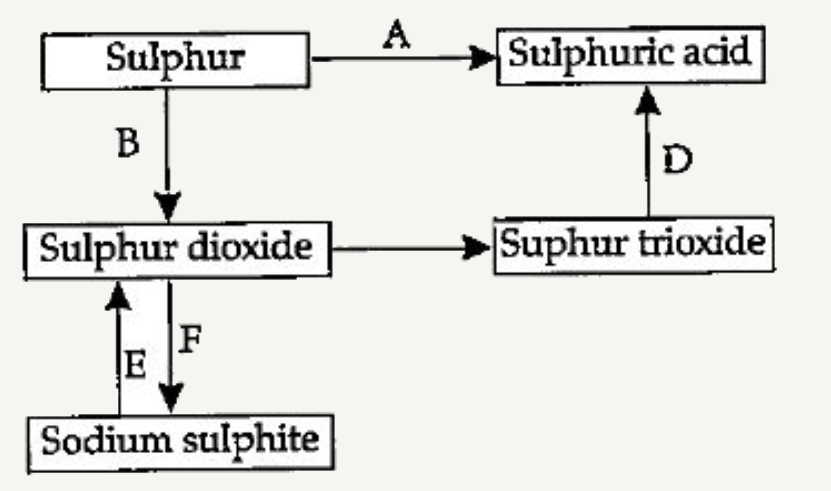For the gaseous reaction involving the complete combustion of isobutane
ΔH=ΔU
ΔH>ΔU
ΔH=ΔU=0
ΔH<ΔU
To solve the problem regarding the complete combustion of isobutane (C₄H₁₀) and the relationship between the change in enthalpy (ΔH) and the change in internal energy (ΔU), we will follow these steps:
Step 1: Write the balanced chemical equation for the complete combustion of isobutane.
The complete combustion of isobutane can be represented as follows:
C4H10(g)+O2(g)→CO2(g)+H2O(g)+heat
To balance the equation, we need to ensure that the number of atoms of each element is the same on both sides. The balanced equation is:
C4H10(g)+132O2(g)→4CO2(g)+5H2O(g)
Step 2: Determine the number of moles of gaseous reactants and products.
- Gaseous Products:
- From the balanced equation, we have:
- 4 moles of CO₂
- 5 moles of H₂O
- Total moles of gaseous products = 4 + 5 = 9 moles
- Gaseous Reactants:
- From the balanced equation, we have:
- 1 mole of C₄H₁₀
- 6.5 moles of O₂ (since 132=6.5)
- Total moles of gaseous reactants = 1 + 6.5 = 7.5 moles
Step 3: Calculate ΔNG (change in the number of moles of gas).
ΔNG is calculated as:
ΔNG=Moles of gaseous products−Moles of gaseous reactants
ΔNG=9−7.5=1.5
Step 4: Use the relationship between ΔH and ΔU.
The relationship between the change in enthalpy (ΔH) and the change in internal energy (ΔU) is given by the equation:
ΔH=ΔU+ΔNGRT
Substituting the value of ΔNG:
ΔH=ΔU+(1.5)RT
Step 5: Analyze the relationship between ΔH and ΔU.
Since both R (the universal gas constant) and T (the absolute temperature) are positive quantities, it follows that:
ΔH>ΔU
Conclusion
Thus, the correct relationship is that the change in enthalpy (ΔH) is greater than the change in internal energy (ΔU) for the complete combustion of isobutane.
Final Answer
The answer to the question is that ΔH is greater than ΔU.
---
- From the balanced equation, we have:
- 4 moles of CO₂
- 5 moles of H₂O
- Total moles of gaseous products = 4 + 5 = 9 moles
- From the balanced equation, we have:
- 1 mole of C₄H₁₀
- 6.5 moles of O₂ (since 132=6.5)
- Total moles of gaseous reactants = 1 + 6.5 = 7.5 moles
Topper's Solved these Questions
- THERMODYNAMICSBOOK - CENGAGE CHEMISTRY ENGLISHCHAPTER - THERMODYNAMICSEXERCISE - Exercises (Assertion-Reasoning)
23 Videos
- THERMODYNAMICSBOOK - CENGAGE CHEMISTRY ENGLISHCHAPTER - THERMODYNAMICSEXERCISE - Exercises (Interger)
10 Videos
- THERMODYNAMICSBOOK - CENGAGE CHEMISTRY ENGLISHCHAPTER - THERMODYNAMICSEXERCISE - Multiple correct Answer Type
2 Videos
- STOICHIOMETRYBOOK - CENGAGE CHEMISTRY ENGLISHCHAPTER - STOICHIOMETRYEXERCISE - Archives Subjective
33 Videos
Similar Questions
Knowledge Check
Complete combustion of ether gives?
AC2H5OHBCO2andH2OCC2H4DC2H2All reactions involving chemical decomposition are
AreversibleBreversible and endothermicCexothermicDmay be reversible or irreversible and endothermic or exothermic
Select the reactions involved in the above reaction:AMichael AdditionBAldol CondensationCDehydrationDPerkin Condensation

What is the reaction involved in B?
View SolutionThe sequence of reactions involved in the production of biogas is
View SolutionNumber of moles of oxygen required for the complete combustion of butane are
View SolutionWrite the combustion reactions of ethane
View SolutionWhat is the mass of oxygen that is required for the complete combustion of 2.8 kg ethylene :-
View Solution
